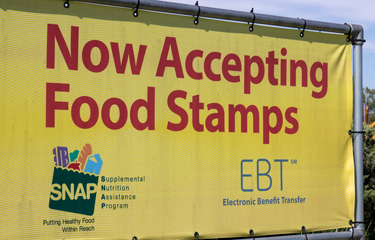The U.S. Department of Agriculture is increasing the Pandemic-EBT benefit and plans to further expand funding of its Supplemental Nutrition Assistance Program (SNAP), presenting significant new opportunities for seafood suppliers to sell their products to fulfill the program’s needs.
Soon after taking office, U.S. President Joe Biden raised the Pandemic Electronic Benefits Transfer (P-EBT) benefit by around 15 percent, according to USDA. The program connects low-income families with kids with food dollars equivalent to the value of the meals missed due to COVID-related school and childcare closures.
“To date, the program has capped P-EBT benefit amounts at USD 5.86 (EUR 4.81) per child per school day and many households have had trouble claiming benefits,” USDA said in a press release. “USDA will increase the current daily benefit amount by approximately 15 percent to tackle the serious problem of child food insecurity during this school year when need is greatest.”
As part of his American Rescue Plan proposal, Biden is also calling on Congress to extend the 15 percent SNAP benefit increase that CONGESS passed in its COVID-19 relief bill in December, invest another USD 3 billion (EUR 2.5 million) through the Special Supplemental Nutrition Program for Women, Infants, and Children (WIC) to help vulnerable mothers and kids get the food they need, and provide U.S. territories with USD 1 billion (EUR 822 million) in additional nutritional assistance funding.
Biden also called on the government to look for creative ways to support restaurants as a “critical link” in the food supply chain to help feed families in need, according to the USDA.
Meanwhile, USDA will begin working with the Department of Justice to review its authority to allow states to provide extra SNAP benefits through emergency allotments to the lowest-income households.
“Last spring, Congress passed emergency increases to SNAP benefits to help address food insecurity during the pandemic. But those benefit increases have not been made available to the lowest-income households who make up 37 percent of SNAP households. Increasing SNAP benefits will not only help families most in need, but it is also a critical and effective form of economic stimulus,” USDA said.
A recent USDA study found that in a slow economy, USD 1 billion in new SNAP benefits would lead to an increase of USD 1.54 billion in Gross Domestic Product (GDP) – 54 percent above and beyond the new benefits.
USDA also said it will revise its Thrifty Food Plan, the basis for determining SNAP benefits, which is “out of date with the economic realities most struggling households face when trying to buy and prepare healthy food.”
"As a result, the benefits may fall short of what a healthy, adequate diet costs for many households today, especially in high cost of living areas. Therefore, as directed by the 2018 Farm Bill, USDA will begin the process of revising the Thrifty Food Plan to better reflect the cost of a healthy basic diet today,” USDA said.
Photo courtesy of Jonathan Weiss/Shutterstock







